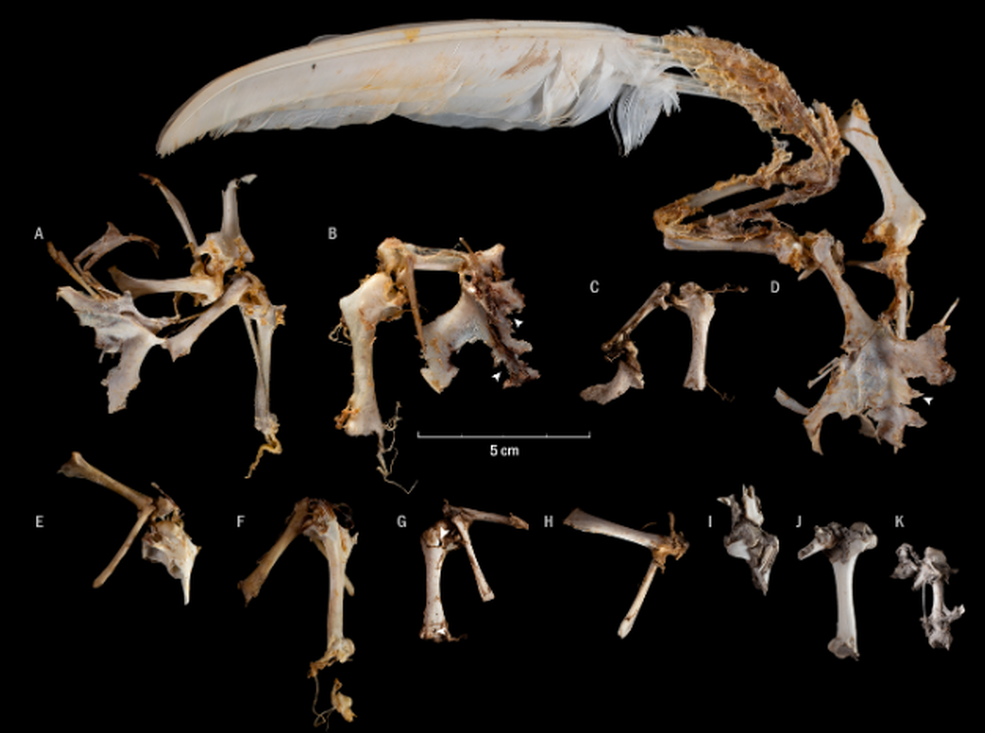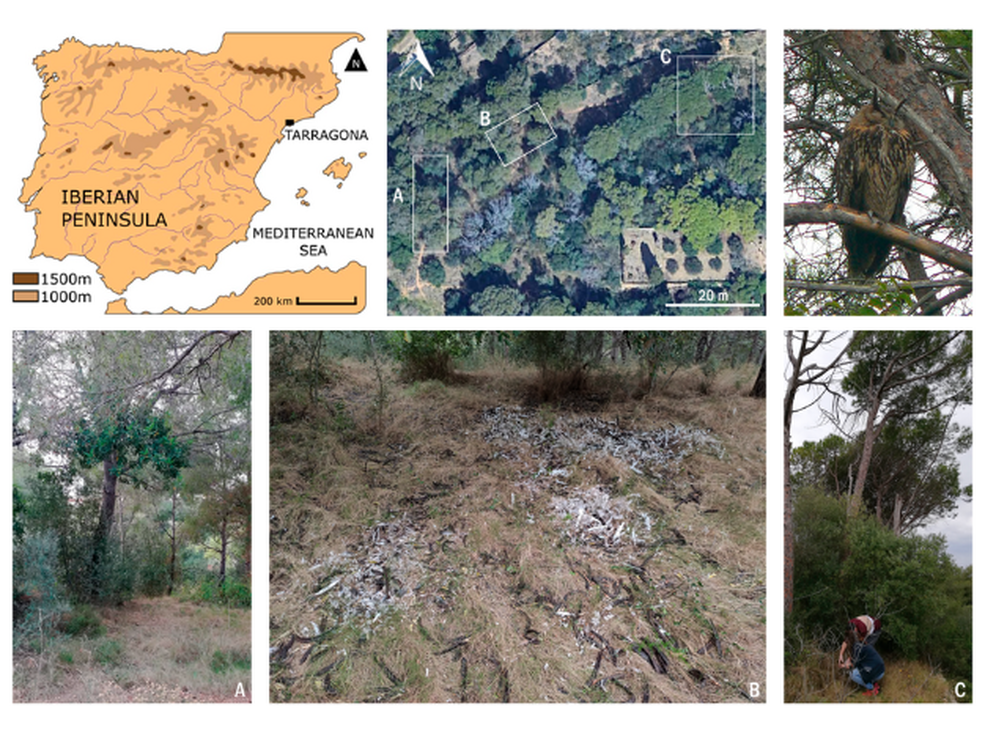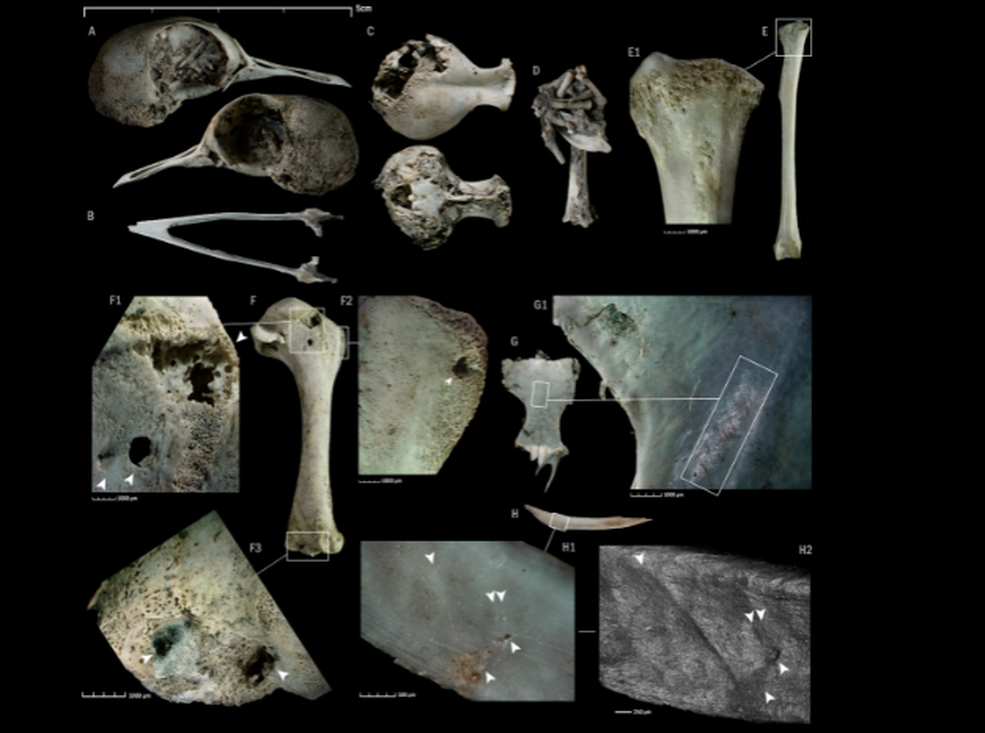The Eurasian eagle-owl, a nocturnal super-predator with unexpectedly complex feeding habits
A study led by IPHES-CERCA and published in the journal International Journal of Osteoarchaeology reveals that the Eurasian eagle-owl (Bubo bubo) can generate highly diverse bird bone accumulations, with surprising marks that may mislead taphonomic resear
A research team led by the Institut Català de Paleoecologia Humana i Evolució Social (IPHES-CERCA) has shown that the Eurasian eagle-owl (Bubo bubo), the largest nocturnal raptor in Eurasia, is capable of accumulating and modifying bones in very different ways depending on the moment of consumption, the location, and the type of prey. The study provides a new perspective for the interpretation of archaeological bone assemblages.
The research has been published in the journal International Journal of Osteoarchaeology in an article led by Mario Marqueta (IPHES-CERCA), with the participation of Maria Boada (IPHES-CERCA), Dr. Carmen Núñez-Lahuerta, researcher at the University of the Basque Country-UPV/EHU and IPHES-CERCA, and Dr. Rosa Huguet (IPHES-CERCA).
One owl, many accumulation patterns
The team analyzed for one year the bird remains accumulated by an eagle-owl on Oliva Mountain (Tarragona), in an environment close to an urban area. They identified three key spots where the raptor carried out different stages of consumption: a clearing where it plucked and dismembered prey (mainly pigeons and small birds such as blackbirds), a pinewood where it regurgitated pellets with partially digested bones, and a third area where both processes were combined.
These results show that a single individual can generate very diverse bone accumulations depending on the prey and the moment of consumption, demonstrating that avifaunal taphonomy (the study of how bird bones are modified after death) is more complex than previously thought.
Pecked, digested and scratched bones
The researchers observed numerous beak marks, broken bones and corrosion caused by digestion. Surprisingly, they also identified scratches on the bones that could easily be mistaken for human cut marks.
“This finding is highly relevant because it forces us to take extra caution when classifying linear marks on bones in archaeological sites. Raptors can also produce scratches on the bones of the prey they process,” explains Mario Marqueta, lead author of the study.
Implications for research
This discovery will help improve the interpretation of archaeological and paleontological sites where bird remains are found, particularly from the Pleistocene. Scientists will be able to better distinguish whether the accumulations were generated by eagle-owls or not.
“Understanding how eagle-owls consume and accumulate their prey is key to better comprehend the role of these raptors in ecosystems and to correctly interpret past bone assemblages,” adds Rosa Huguet, co-author of the study.
A window into the past
The study highlights how neotaphonomic research (based on the analysis of living animals) is essential to better understand the fossil record and to avoid misinterpretations of past human behavior.
Reference
Marqueta, M., Boada, M., et al. (2025). Neotaphonomic Analysis of Bone Accumulation by a Nocturnal Raptor (Bubo bubo): Evidence From Avian Remains in Oliva Mountain (Tarragona, Spain) International Journal of Osteoarchaeology. https://onlinelibrary.wiley.com/doi/10.1002/oa.70011



